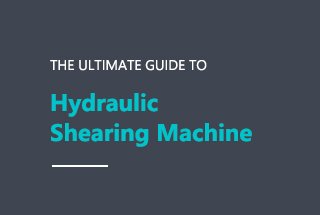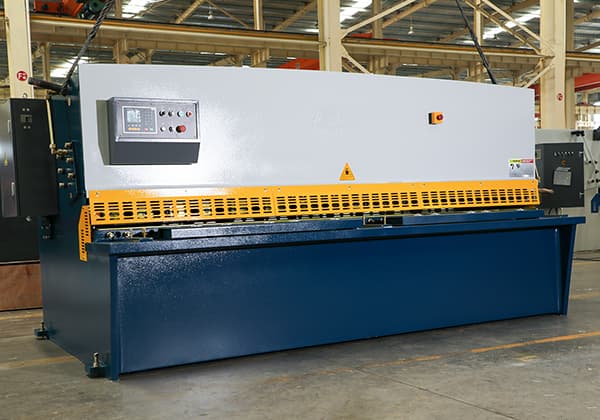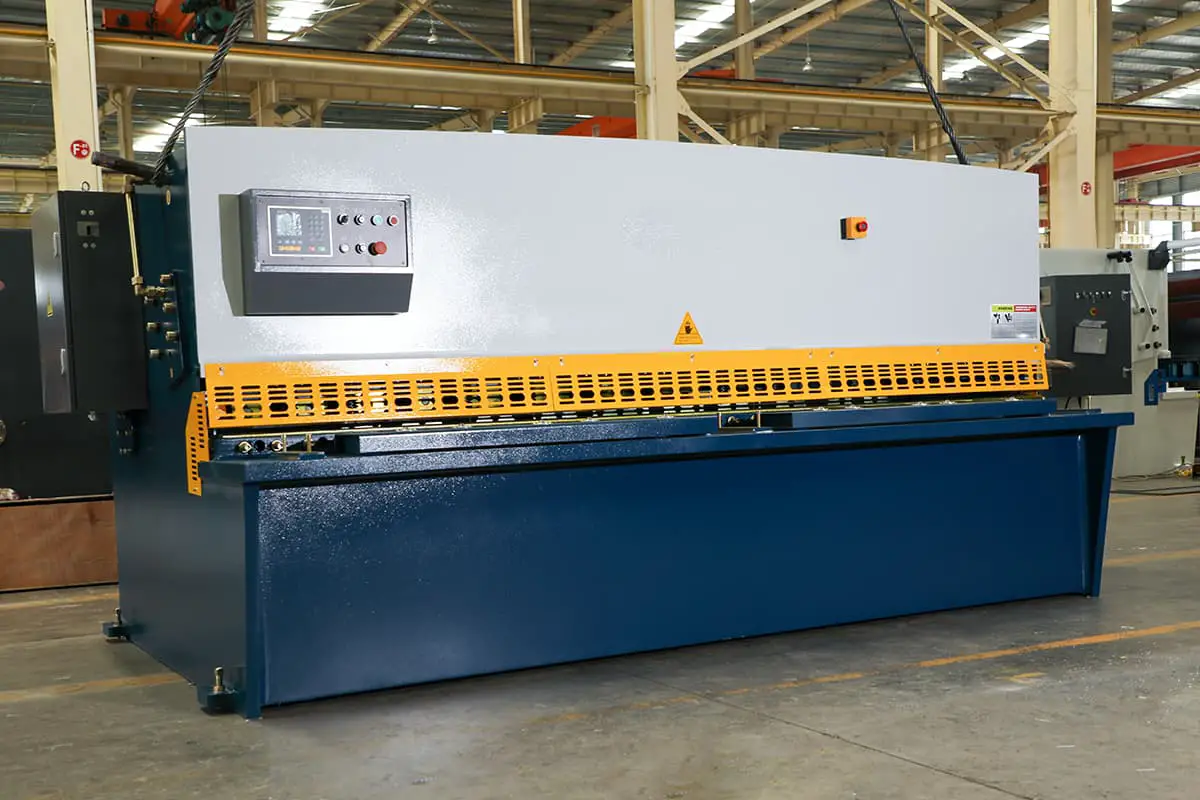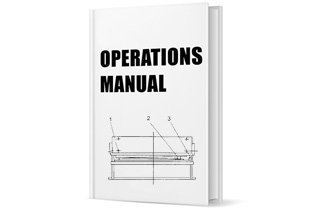
Ever wondered how to maximize the efficiency and safety of your shearing machine? This guide delves into essential tips for operating and maintaining these powerful tools. From choosing the right materials and ensuring proper lubrication to troubleshooting common issues, you’ll discover best practices that enhance performance and extend the lifespan of your equipment. Dive in to learn how to keep your shearing machine running smoothly and safely.

The purpose of this document is to standardize the work behavior of operators and ensure human-machine safety, preventing product rework and scrap due to human negligence. It also aims to promote standardized and normalized operations.
This document is applicable to the operation control of the shearing machine in the production department of our company.

The shearing machine applies cutting force to metal plates of various thicknesses by using a reasonable blade clearance between the moving upper blade and the fixed lower blade, causing them to break and separate according to the required size.
The shearing machine can be divided into foot pedal (manual), mechanical shearing machine, hydraulic swing shearing machine, etc.
Shearing machines are commonly used to cut straight-edged blanks.
The shearing process should ensure the straightness and parallelism of the sheared surface of the material and minimize the distortion of the plate to obtain high-quality workpieces.
Our company uses QB11-4×2000 shearing machine.
Relevant production personnel are responsible for material confirmation, quality assurance, and report filling during the production process.
Related personnel select the required materials according to production requirements: when selecting, they should pay attention to the color, grade, coating type, thickness, width, and strength of the materials, and whether they are consistent with the requirements on the production order. Use leftover materials first.
5.2 Startup and Shutdown of the Machine
When starting the machine, the main control power supply lock on the electrical cabinet should be opened first, the switch should be set to the “ON” position, and then the power switch on the main control panel should be turned on to the “ON” position. When shutting down, first set the main control switch to the “OFF” position, then rotate the power switch on the electrical cabinet to the “OFF” position, and lock the cabinet.
5.3 Precautions for Using the Shearing Machine:
| Model | Max. Cutting Thickness.(mm) | Max. Cutting Width(mm) | Shearing Angle | Backgauge Range(mm) | Stroke Frequency (Times/Min) | Main Motor Power(kw) | Weight(kg) | Dimensions(mm) |
| QB11-4×2000 Hydraulic swing shearing machine | 4 | 2000 | 2°30′ | 500 | 27 | 5.5 | 3300 | 3200×1300×1610 |
7.4 Operation Procedures
7.4.1 Preparation before Operation
(1) Before operating, the operator must wear tight protective clothing, fasten the cuffs, and not wear loose clothing or wrap anything around the body near the running machine to prevent being caught by the machine. Safety helmets must be worn, and hair should be tucked inside the helmet. Skirts and sandals are not allowed.
(2) The operator must be familiar with the main structure, performance, and usage of the shearing machine.
(3) This machine is suitable for shearing various steel plates, copper plates, aluminum plates, and non-metallic material plates with a thickness equal to the rated value of the machine, provided that they are free of hard marks, slag, burrs, and welds. Over-thickness is not allowed.
(4) The lubrication of each part of the machine should be maintained regularly. The operator should add lubricating oil once per shift, and the machine repairman should add lubricating oil to the rolling bearing part once every six months.
7.4.2 Operating Procedures
(1) Operators must be familiar with the general structure and performance of the equipment and strictly prohibited from using the equipment beyond its performance limits.
(3) Before starting the machine, add lubricating grease according to the equipment lubrication requirements, check the oil cup level and oil quality, and cover the oil cup hole cover.
(4) Before working, the blade must be kept sharp. If the blade becomes dull or cracks, it should be sharpened or replaced promptly. The blade plate must be securely fastened, the blade must be close to the plate, and the upper and lower blade plate surfaces must be kept parallel. After adjustment, manual rotation of the flywheel should be used to check for any accidents.
The blade clearance should be determined according to the thickness of the steel plate to be sheared, generally between 5-7% of the thickness of the sheared plate. Each time the clearance is adjusted, the flywheel should be manually rotated to make the upper and lower blades move back and forth once, and an auxiliary measuring tool should be used to check if the clearance is appropriate to prevent spring breakage or damage to the blade.
(5) It is not allowed to cut two different specifications or different materials of sheet metal at the same time or to cut stacked materials. The cut sheet metal should have a smooth surface, and the edge of the burr material should not be trimmed. It is not allowed to cut narrow or short materials that are not tightly pressed.
(6) Adjust the stopper or fixture according to the cutting requirements of the workpiece. Loosen the positioning material stopper bolt, adjust the position of the positioning material plate, and fix it firmly. Before working, run the machine without material 2-3 times to confirm good lubrication and normal operation before starting work.
(7) The feeding must be straight, flat, and stable. Fingers must not be close to the cutting edge or pressure plate. When feeding, pay attention to finger safety, especially when cutting the last piece of material, do not put your fingers under the material or into the cutting edge. If the last piece of material is less than 200mm, manual cutting is not allowed, and auxiliary tools should be used for cutting.
(8) It is not allowed to repair or wipe the machine tool during operation, and tools or other objects are not allowed to be placed on the machine table to avoid damaging the blade by entering the cutting edge.
(9) During cutting, the material pressing device should press the sheet metal tightly, and cutting is not allowed in the state of loose pressing.
(10) A protective fence should be installed on the shear trigger to prevent the operator’s hand from entering the cutting area. The protective fence should not obstruct the operator’s eyes from seeing the cutting position. It is strictly forbidden to pick up waste materials on the ground during work to avoid injury from falling workpieces. After the operation, the operator should clean up the waste material with sharp edges in time to prevent stabs or cuts.
(11) The moving parts of the belt, flywheel, gear, and shaft of the shear must be equipped with protective covers.
(12) Pay attention to whether the clamping mechanism, clutch, and brake have any abnormal malfunction. Concentrate during cutting. If there are any abnormal phenomena in the equipment, stop cutting immediately, cut off the power supply, and notify relevant personnel for inspection.
(13) To ensure safety production and improve work efficiency, in case of personal or equipment accidents, the scene should be kept and reported to the relevant departments.
(14) Before leaving work, the power supply should be cut off, the equipment should be wiped clean, and the inspection record should be completed.
7.4.3 Precautions
(1) It is forbidden to cut materials that are too long or too thick, and materials such as high-speed steel, tool steel, and cast iron that have been hardened or tempered.
(2) Before starting the machine, disengage the clutch and do not start the motor under load.
(3) Before starting the machine, perform a test cut without a workpiece. Only after the test is successful can you start processing.
(4) It is forbidden to cut explosive materials, bars, materials that are too thin, and non-metallic materials.
(5) Pay attention to the clutch to ensure that it is functioning properly. Check if the fasteners are secure, and keep your fingers away from the cutting area when feeding. It is strictly forbidden for two people to cut two pieces of material at the same time on the same machine, and it is not allowed to stand on the cutting bed after cutting.
(6) The equipment should be operated by a dedicated person, and it must not be used without permission. It is necessary to ensure that the machine is stopped when people are away.
(7) Adjusting, repairing, and cleaning the equipment must be done when the machine is stopped.
(8) It is forbidden to loosen or tighten the material clamping device or adjust the blade clearance by tapping. When adjusting the blade clearance, the machine must be stopped first.
(9) It is forbidden to reach into the cutting area with your hands or use your hands to feed or pick up materials during operation.
When operating the shearing machine, all safety regulations must be followed:
Maintenance and upkeep methods for the shearing machine are as follows:


